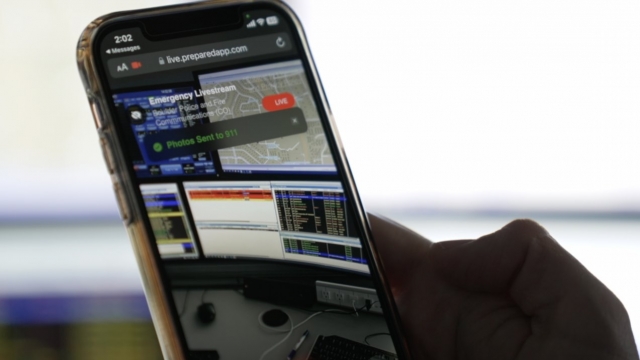A growing number of 911 centers across the country are utilizing livestream video to enhance public safety. First responders say they expect it to be revolutionary in the coming years.
911 Communications Manager Brad Riggin at the Boulder Police Department in Colorado explains how it works.
"If somebody calls 911, the dispatcher will ask them, 'Hey, can we send you a link? We want to get some photo or video to help our response,'" Riggin said. "The caller will then get a link. Once they click that, they'll be asked to allow access to their camera. And then once they do that, we have live video and photo in the center."
Riggin says the ability to livestream video will be a game-changer in many situations.
"Any call or incident with a suspect, this is really helpful to see exactly what that suspect looks like," Riggin said. "A lot of that can be lost in translation with the caller who's kind of under stress. And then also, on the fire side — structure fires and wildfires — we can really see just how bad that fire is, make sure we're getting the right resources to that. We can also use it for injuries or CPR. If somebody needs help walking through CPR, this is an extra tool to help them to see if they're doing it correctly."
If somebody is at a robbery or in a domestic violence situation, dispatchers have the ability to turn your screen black so others don't even know you've contacted 911.
Deputy Police Chief Stephen Redfearn, also with the Boulder Police Department, started his career in dispatch. He says he's witnessed many beneficial changes in technology the past two decades.
"When 911 first started, we could only tell from about a mile radius potentially where someone was," he said. "Now, we have the ability to pinpoint location, text to 911, and live-stream video."
SEE MORE: States working to curb racially-biased 911 calls
Considering multiple third-party vendors offer the livestreaming video service, April Heinze with the National Emergency Number Association says it's difficult to track how many 911 centers are utilizing the technology. But, she says it's been available for about two years and a growing number of the 5,800 centers across the country are adopting it.
"If it's an area that they feel that this is really something that they want to provide to their citizens — it doesn't matter if it's rural or urban — they'll provide it," Heinze said.
In the future, Heinze expects people will eventually be able to call 911 through video calling initiated by the caller, such as calling 911 through FaceTime.
As we transition into a time when dispatchers can see video of tragic events and not just hear it, Heinze says mental health resources also need to be adopted.
"When you are watching something and you are truly not able to be there and physically intervene, there are a lot of different psychological factors that come into play there," Heinze said.
Meanwhile, emergency responders want the public to know this tool is to improve safety, not to gain access to your phone.
"It's not a long-term thing where we have access," Redfearn said. "Once it's over, it's over and then it's only access to that camera. So we want to make sure people understand this is not the police department taking over your phone and looking through your contacts and pictures and things. It's specifically just to get that video."
Redfearn says any information first responders can get prior to arriving at the scene is helpful. He also says the video will continue to help even after an emergency situation, because it can serve as evidence in court.
Trending stories at Scrippsnews.com





